1959 Velorex Oskar 16/250. Microcar
- Price:
- Condition: Used
- Make: Other Makes
- Year: 1959
- Mileage: 2,200
- VIN: 2402
- Vehicle Title: Clear
- Location: Northbrook, Illinois, United States
Description
1959 Velorex Oskar 16/250
This is a rare example of Velorex. Out of approximately 15,0000 Velorexes produced, only 2,500 were the 250s. This is one of the last 250s made, sequential serial number 2402.Vast majority of Velorexes made are 16/350 models Oskar was the original name of the trike. Later it was changed to Velorex Oskar and finally, Oskar name was dropped, and the trike was simply called Velorex.
This Oskar somehow survived nearly 50 years totally intact. Even the rare and now difficult to source glass tail lamps and glass turn signals are in perfect condition. I included three pictures of this OSKAR when I found it at an auto bazaar in Europe.
See a short video by searching youtube for:
1959 Oskar 16/250 Velorex short ride. 195916250
BACKGROUND
In the sea of cute but commonplace Isettas, the Velorex stands out as a lesser-known but interesting and unusual microcar. Built in Czechoslovakia from late 50s to late 60s, Velorex was designed by brothers Stransky in their bicycle repair shop.
Very few of these fascinating microcars survive in Eastern Europe, mostly in Czech Republic, Slovakia, Poland, and Hungary.
CONDITION
I imported this Oskar in 2004 along with few other Velorexes. It was partially restored before I had it shipped to the US. The frame was sandblasted and painted, new tires mounted on refurbished wheels, and the engine was installed but it still needed a lot of work.
The Oskar was purchased by a gentleman from California who wanted to finish the project and to make and install the covers. Alas, a decade later the car was still sitting in his warehouse untouched.I purchased the Oskar back from him. I ordered a brand new set of custom made covers from Czech Republic - based upholsterer who specializes in Velorex microcars. The material is identical to that used originally by the Velorex factory. I had a mechanic go through the car and finish the mechanical restoration including sorting out the electrical system, ignition, brakes and a lot of little things that popped up along the way.
Unusually for the 16/250, this example is equipped with a Bosch dynastarter. The installation looks as if it were done at the factory (the side cover looks cast, not modified by simply grinding off the part covering the shaft).At the time, factory did not produce dynastarter equipped cars. It happened later with the 16/350. All Velorexes have a short lever in the cockpit attached via long rod to the kickstarter shaft. Using this lever to start the engine is a knuckle-busting experience (I speak with authority of, ahem, first-hand experience), when the engine is cold. Once warmed up, well tuned Jawa engine will start without fuss.
On suggestion from the mechanic, I had a compression release valve installed to aid in starting the engine with the dynastarter. It works beautifully. Original head was not harmed in the process. I sourced a replacement and the original, untouched head comes with the car.
The Oskar is now in driving condition (see the youtube video). It starts, runs and stops. I drove the car around the neighborhood and noticed that despite displacing only 250cc, the engine provides performance similar to that of a 350cc twin, used in later models. People who tour Europe in Velorexes often use the 250cc engine instead of the 350cc for weight savings and reliability.
WHAT NEEDS TO BE DONE:
Body covers need to be fitted and installed.
Windshield needs to be installed (included, along with a seal).
Shake down runs should be performed before taking it for a long drive. For example, on one of my test drives the chain master link came undone. I replaced the chain with a brand new one. Small
problems are likely to surface but nothing major.
OTHER COMMENTS:
Unlike other microcars (Isetta, Goggomobil, Messerschmitt etc.) with a steel or fiberglass bodies, Velorex is extremely simple (Well, OK - it is primitive): tubular spaceframe combined with the Jawa motorcycle engine and wheels, vinyl panels for body.
I have a 68 Velorex 16/350 and I drive it a lot, shocking people on the road and answering never-ending questions at car shows. Driving it, as you can imagine, is a lot of fun. Especially with the top down. It is like riding a simple motorcycle, very basic, honest experience.
Everybody who drove my Velorex for the first time, mentioned how exhilarating and amusing the experience was. It must have been because, without exception, everybody worn the same silly grin on their face: just like riding a minibike for the first time when we were kids.
Velorex is a sturdy and rugged vehicle, designed to withstand everyday use in communist-era world (which is to say abysmal roads and chronic shortage of replacement parts). Oh, and you don't have to worry about denting or scratching the bodywork.
To engage reverse you simply throw a switch on the dashboard and the engine starts in opposite direction giving you 4 reverse speeds. Just when you thought driving forward in a trike is thrilling.
As a testament to the vehicle's ruggedness, consider that a Czech Velorex Club routinely organizes trans-European trips during which the cars Velorexes are driven to the destination and back. No trailers. The most amazing trips they made was to Egypt, and then, few years ago they traveled in Velorexes from Chicago to LA on Route 66.Try that in another microcar!
 1959 Other Makes T400 Goggomobil Microcar
1959 Other Makes T400 Goggomobil Microcar
Mileage: 14,375
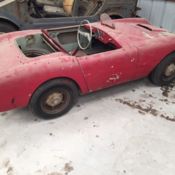 1959 Berkeley SE-492 project vintage race car microcar
1959 Berkeley SE-492 project vintage race car microcar
Mileage: 424
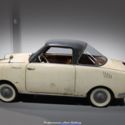 1959 Goggomobil TS400 Semi-Automatic 2-Door Coupe Microcar
1959 Goggomobil TS400 Semi-Automatic 2-Door Coupe Microcar
Mileage: 32000
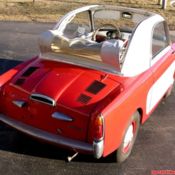 1959 59 Autobianchi Bianchina Trasformabile Micro Car FIAT Microcar Survivor
1959 59 Autobianchi Bianchina Trasformabile Micro Car FIAT Microcar Survivor
Mileage: 43,461
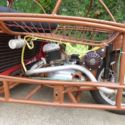 velorex three wheel bohemian car
velorex three wheel bohemian car
Mileage: 999,999
 1969 Velorex 16/350 Three-wheeler, Jawa two-stroke, Four-speed sequential manual
1969 Velorex 16/350 Three-wheeler, Jawa two-stroke, Four-speed sequential manual
Mileage: 56,455
 BMW 700 Cabriolet Microcar
BMW 700 Cabriolet Microcar
Mileage: 999999
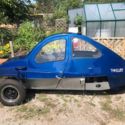 1980 HMV Freeway Microcar
1980 HMV Freeway Microcar
Mileage: 16,000
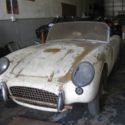 Berkeley SE 492 Sports Car 492cc Microcar
Berkeley SE 492 Sports Car 492cc Microcar
Mileage: 999,999
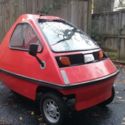 Zoe Zipper microcar like Peel ,Isetta
Zoe Zipper microcar like Peel ,Isetta
Mileage: 475












